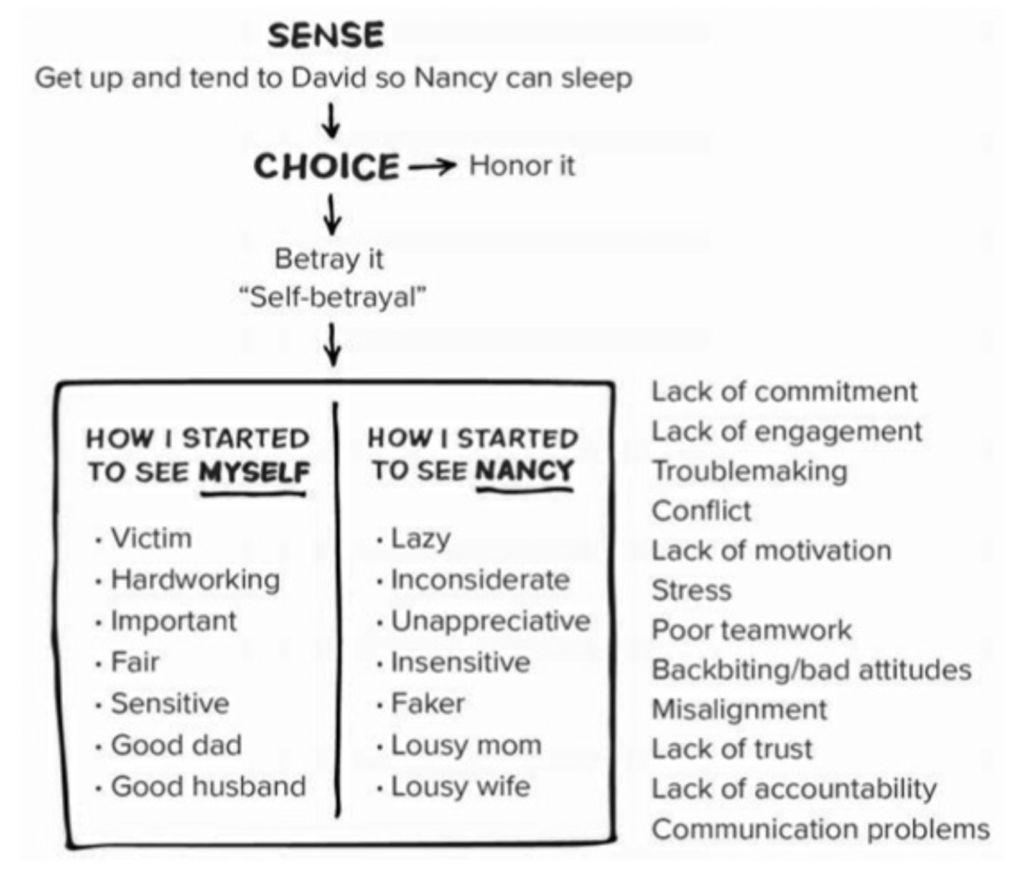We continue this week with “Leadership and Self-Deception”. We have learned about our thinking patterns, our behaviors, some of the rational around why we do what we do.
At this point we can recognize the box, we might even be getting better at avoiding it and maybe even have found ways to get out of the box. We have learned to recognize when others may be in their own box. If we are alert we can possibly even notice some collusion occurring.
Today we conclude Part II “How We Get in the Box” and now move towards Part III “How We Get out of the Box”. At this point we have been able to acknowledge a few things…
Lack of Commitment
Lack of Engagement
Troublemaking
Those three characteristics are most undoubtably been part of our life. Some of it might have been our complaints about others, but in reality they were accurate definitions of ourselves. Others might have pointed it out, but internally, we are aware of these behaviors in ourself more than anybody else. The challenge is do we just subliminally just deny it or justify it.
In chapter 16, Bud reflects on the time when he and his wife were in bed and their son in the other room began to cry and how his “box event” unfolded. Now he summarizes the situation of being in the box and self-deception.

Beside the box, was listed the resulting behaviors of being in the box. There are many items in that list that we may exhibit, feel, or even manifest with certain relationships. These behaviors are not who we are, but by-products of being in the box.
In the past couple of sessions we have worked on recognizing the boxes in our lives, ours and others. We have been able to consciously make changes for the better and we may have even experienced some changes in our life.
What we want to point out is that this is not just a guardrails, and cause and effect situation. We want to get to a point where our true self comes to life.
Can you see from the list some behaviors you exhibit with certain people but not with others? Can you reflect on a situation where the box can be defined?
The sad part is that when we notice some of these behaviors, the can transform into an identity that we carry around from relationship to relationship.
Can you identify a behavior that can be one of the descriptions others might label you with?
Are there any behaviors that you label yourself with?
Are you okay with those labels and identity?
We need to remember that most of the time these behaviors come from our own self-deception. We have an opportunity for change and it is so refreshing and joyful.
Biblical Insights & Examples
Can you think of a time when a Biblical character was labeled or identified in a particular way, but it was not their true self?
Reflecting on the diagram an example that can be unfolded in King David and his whole situation when he saw Bathseba and wanted her. The killing of her husband, Uriah,the breaking of his covenant with his wife, and his many documented behaviors that can be his labels…
Lack of Commitment & Engagement
Did not go to battle and do what Kings were supposed to do
Conflict, Lack of Motivation, Stress
We can only imagine the voices that were going through his head, and it did not make the situation any easier.
Lack of trust and accountability
We know that David’s sin and box-behavior involved many others.
We also typically think of David, Bathseba and her husband, but we can pause and realize there were a lot more individuals involved in this historical event, and they were not merely objects. The relationship of David to his wife Michal, the daughter of King Saul.
This week
Pay attention to the emotions, feelings and actions that you exhibit this week. Try to be aware of what others might be labeling you with (might not be words, but coiuld be their interactions with you).
Journal about the behaviors you acknowledge and work through seeing if there might be some common behaviors or certain situations or people that create those boxes. Then next week we will learn about escaping the box.
